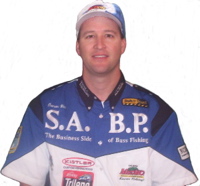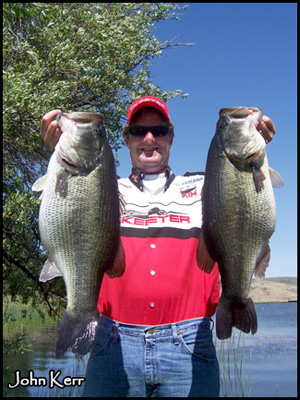
 There is no better time of the year, than Fall, to get out the crank baits. Bass feel the need to store up extra weight for the winter and start feeding on their two favorite food sources: baitfish and hopefully a few crawfish. Crawfish are still present and need to be kept in mind when selecting crankbait patterns and colors but the bread and butter of the season are the shad patterns. In Fall shad have grown fairly large and bunch up around mouths of creek channels and other areas close-by. Bass will often ambush baitfish that move through these areas or push them from open water to the shoreline, thus pinning them in for an easy meal.
There is no better time of the year, than Fall, to get out the crank baits. Bass feel the need to store up extra weight for the winter and start feeding on their two favorite food sources: baitfish and hopefully a few crawfish. Crawfish are still present and need to be kept in mind when selecting crankbait patterns and colors but the bread and butter of the season are the shad patterns. In Fall shad have grown fairly large and bunch up around mouths of creek channels and other areas close-by. Bass will often ambush baitfish that move through these areas or push them from open water to the shoreline, thus pinning them in for an easy meal.
John Kerr, reigning U.S. Open Champion, shares with us some of his thoughts on Fall cranking and some baits and techniques that have led him to catch some huge bass on his favorite California lakes. “Bait selection is the first step to being successful when throwing crank-baits” John states. “There are a lot of baits out on the market, but in order to gain confidence, you have to start with a bait that you know you can trust to catch fish. I throw the line of Strike Pro crank-baits for three reasons. Strike Pro makes an extremely high quality bait, has incredible finishes, and always produce lots of fish for me, including some real lunkers.”
 When trying to develop a crank-bait pattern it is very important to really commit to it. Many anglers give up to soon if they don’t get bit in the first hour. The need to feel a tug at the end of the line, overwhelms many anglers and they put down the cranking rod for a worm rod and start throwing plastics. The best way to develop a crank-bait pattern is to put all other rods in the rod locker, place two cranking rods on the deck with five or six crank-baits that have different colors, patterns and running depths. A few crawfish colors and the rest shad imitations. Start where feeder creeks run into the main lake channels and look for areas where shad may be present. If you are graphing schools of bait around the points and in the cuts start cranking.
When trying to develop a crank-bait pattern it is very important to really commit to it. Many anglers give up to soon if they don’t get bit in the first hour. The need to feel a tug at the end of the line, overwhelms many anglers and they put down the cranking rod for a worm rod and start throwing plastics. The best way to develop a crank-bait pattern is to put all other rods in the rod locker, place two cranking rods on the deck with five or six crank-baits that have different colors, patterns and running depths. A few crawfish colors and the rest shad imitations. Start where feeder creeks run into the main lake channels and look for areas where shad may be present. If you are graphing schools of bait around the points and in the cuts start cranking.
“ I usually begin with my confidence bait, a Strike Pro Classic Shad 55 in Lemon Lime , which is really more of a citrus shad color, says John. I catch tons of fish on this bait. The key to catching fish is to bang the rocks. Most guys work their cranks too fast. Once you reach the rocks or bottom., just reel fast enough to keep the bait banging into stuff or digging along in the sand or mud. Just reeling your lure in clean water will cut your catch rate in half or less. I will then experiment with color and size. I will try white, true shad color and maybe a craw color. If the water is stained I might try a brighter color. I just listen to what the fish are telling me. For a bigger profile bait I move up to the DD 62 and DD 72. These crank-baits have a truly unique color that drive fish crazy. I can get these baits down and really bang the bottom in 10-12 ft and draw up the really big toads. Or if I am fishing super shallow I go to the Oscar 60 and 50. These baits have an enticing wide wobble and make a lot of noise which can really make a big bass to crush them when retieved next to cover and through weeds. With fourteen different types of Strike Pro crank-baits I can always find a bait for whatever condition and pattern I have found.”
The key to establishing the crank-bait pattern is to never give up looking for it. Commit to finding the pattern and slowly the pieces of the puzzle will fall into place. Once a pattern is established, the crank-bait will generally put bigger fish in the boat.
Line size is also an important part of cranking. Different lines sizes impact the running depth of a crank-bait. A bait that runs in 8ft of water using 10 lb test will run in only 6 to7 ft with 12lb test. Generally the rule of thumb is: 10lb test for open water or lack or trees and brush in the water and 15-20lb test for areas with heavy cover.
Fall is indeed an outstanding time of year to catch a lot of fish on a crank-bait. Having the right bait is important as well as committing yourself to developing and understanding a pattern that works.


 Advertising
Advertising